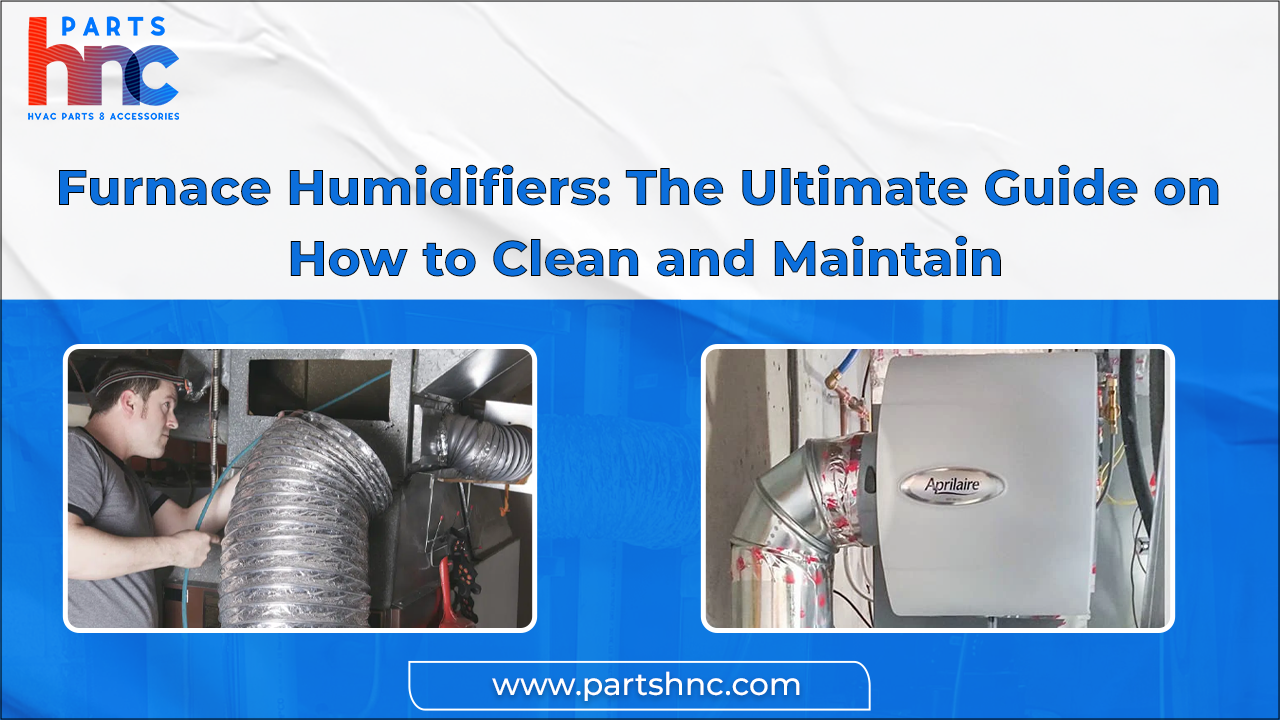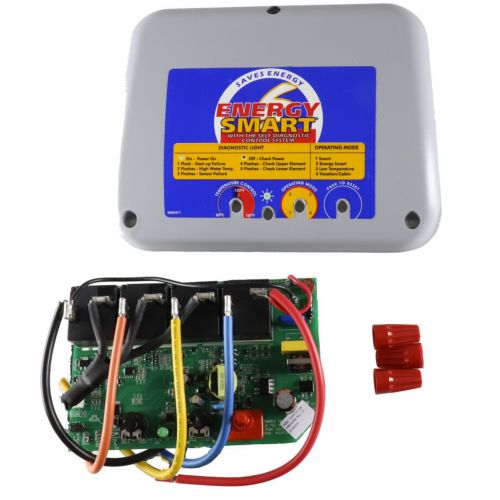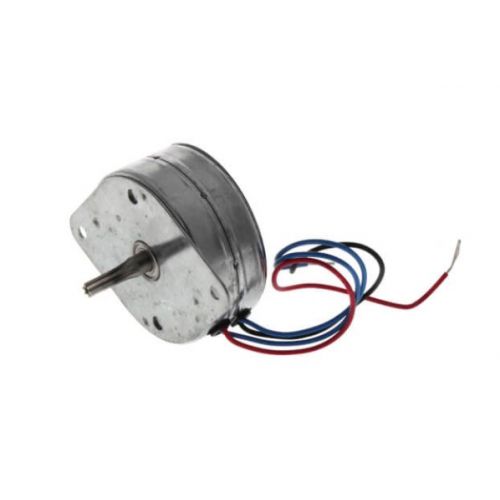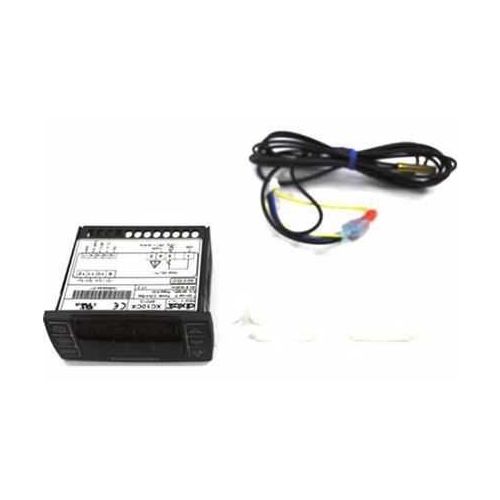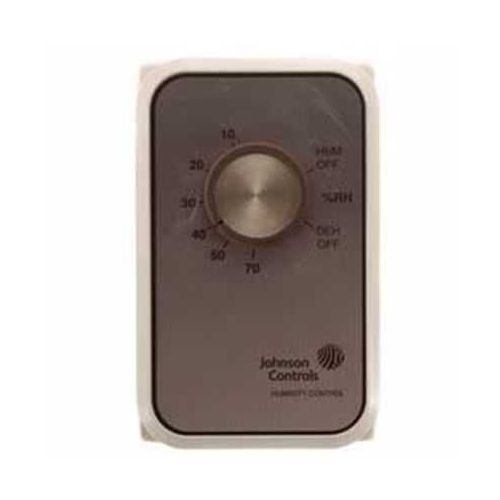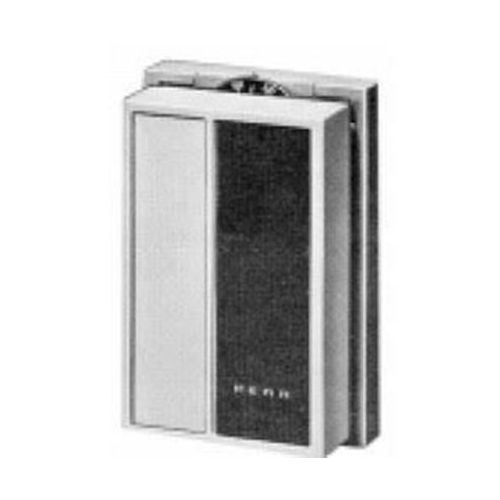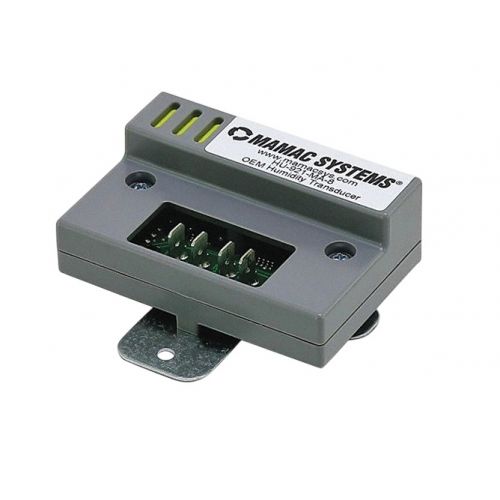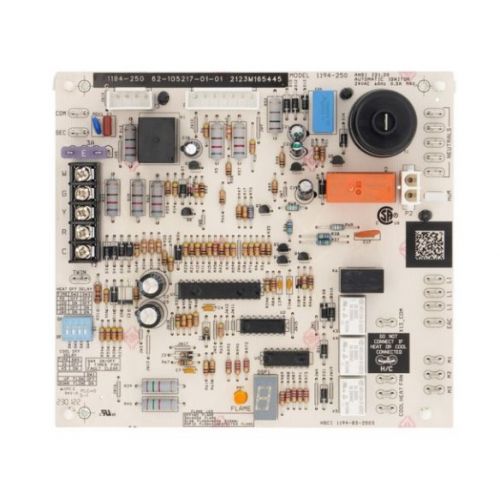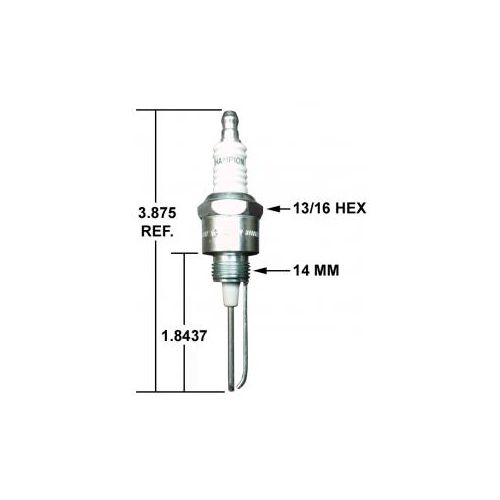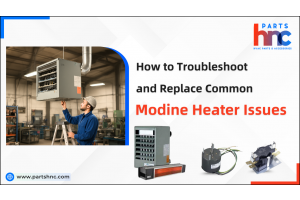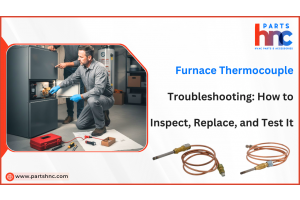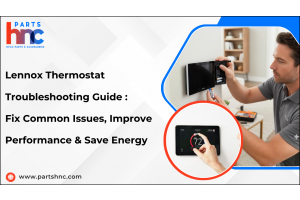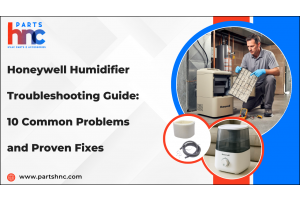Furnace Humidifiers: The Ultimate Guide on How to Clean and Maintain
Furnace humidifiers are essential for maintaining comfort in your home during the chilly months, adding moisture to dry air and preventing issues like dry skin, static electricity, and irritated sinuses. However, without regular cleaning and maintenance, your humidifier could become a breeding ground for bacteria, mold, and dust, leading to poor air quality and health concerns. Keeping your furnace humidifier in top shape is crucial for its efficiency and longevity. In this comprehensive guide, we’ll show you how to properly clean, maintain, and troubleshoot your humidifier, ensuring it works at its best all year long. Whether you’re a newbie or a seasoned pro, these simple yet effective tips will help you enjoy cleaner, healthier air in your home.
Why Does a Furnace Humidifier Need Maintenance?
During winter months when homes become dry, furnace humidifiers serve as essential devices to maintain proper humidity levels. The appliance needs scheduled maintenance checks for efficient operation and safe usage. Your humidifier needs proper care to prevent bacteria mold growth and allegen buildup because these issues threaten both your health along with your indoor air quality.
Here’s why furnace humidifier maintenance is essential:
-
Prevents Mineral Buildup: The system becomes less efficient and may fail because hard water minerals create blockages that affect its performance. Regular cleaning procedures stop mineral deposits from forming.
-
Improves Air Quality: Dust and mold along with bacteria accumulate inside humidifiers which results in both bad smells and poor indoor air quality. Part of regular maintenance work consists of air cleaning operations alongside fresh air generation.
-
Enhances Performance: Routine maintenance enables proper functioning which allows the device to reach its maximum humidity capability leading to better performance and improved health conditions within your home.
-
Prevents Health Issues: Neglected humidifiers will make respiratory problems and allergies worse because mold and bacteria accumulate inside them.
-
Extends the Lifespan: Maintenance practices extend the life expectancy of the unit while providing efficient performance thus preventing future repair expenses or replacements.
Regular checks combined with cleaning operations will help your furnace humidifier last longer while maintaining a healthy living environment.
Is your furnace humidifier not working? PartsHnC has you covered. We offer a wide range of furnace parts from leading brands like Honeywell, Aprilaire, and Bryant. Find everything you need, from water panels, humidifier filters, and drain hoses, to keep your system running smoothly.
Signs Your Furnace Humidifier Needs Cleaning and Maintenance
Effective furnace humidifier care and maintenance begins with detecting the signs that your system requires cleaning to achieve peak performance and home air quality goals. The following signs indicate your humidifier needs maintenance:
-
Reduced Moisture Output: Your humidifier stops releasing moisture effectively because mineral deposits and dirt accumulate inside the unit. The device becomes unable to regulate humidity effectively. The cleaning process helps to recover its operational effectiveness.
-
Strange Odors: Your humidifier produces strange odors when mold or bacteria grow inside the unit because of the musty or foul smells. Dangerous substances generated by your humidifier damage both indoor air and develop health problems. Cleaning the unit removes odors while simultaneously enhancing indoor air quality.
-
Water Leaks or Drips: Water leaks or drips near your humidifier indicate either a blocked drainage system or a system malfunction. The failure to perform immediate maintenance creates risks of water damage and performance reduction which requires immediate attention to avoid additional problems.
-
Increased Dust or Static Electricity: A humidifier that receives inadequate maintenance will create both excessive dust accumulation and static electrical charges in your home environment. The air becomes unpleasant to breathe and your skin develops discomfort. Appropriate cleaning procedures help restore the water proportion to enable static reduction.
-
Visible Mineral Deposits: The presence of hard water minerals produces visible deposits that accumulate inside humidifiers. The accumulation of deposits inside the unit blocks operational components which results in reduced efficiency. The unit will operate efficiently when regular maintenance removes accumulated materials.
-
Inconsistent Humidity Levels: The humidifier fails to maintain consistent humidity levels when your home environment shows inconsistent moisture levels because of internal system issues or accumulated materials. The system will achieve stable humidity after a complete examination and cleaning process.
You should clean and maintain your furnace humidifier when you observe these warning signs to maintain its operational efficiency.
Check out this guide on how to install a furnace humidifier to ensure the system is properly set up and performing well.
Tools and Supplies Needed for Furnace Humidifier Cleaning
The effective and safe cleaning of your furnace humidifier requires basic tools and supplies for the task. The following items will help you start your furnace humidifier cleaning process:
-
Screwdriver: A screwdriver serves as a necessary tool to remove covers and panels for cleaning purposes without harming the unit.
-
Vacuum Cleaner: A vacuum cleaner equipped with a brush attachment enables users to clean filters and components to stop mold development.
-
Soft Cloth or Sponge: A soft cloth or non-abrasive sponge should be used to clean surfaces because it prevents damage to parts.
-
White Vinegar: White vinegar serves as an excellent cleaning agent because it breaks down mineral deposits while eliminating mold and bacterial growth.
-
Water Softener or Descaler: The combination of water softeners and descalers helps dissolve mineral deposits which are most common in areas with hard water.
-
Disinfectant or Mold Cleaner: A mild disinfectant or mold cleaner combined with a sanitizing function protects the humidifier from bacterial or mold growth.
You can achieve optimal furnace humidifier performance alongside a healthier indoor space through maintaining proper care using these tools along with supplies.
How to Clean a Furnace Humidifier
The performance of your furnace humidifier depends heavily on regular maintenance through cleaning procedures which also help produce better air quality in your residence. The following steps show you how to clean your furnace humidifier properly:
-
Turn Off the Power: First turn off the power supply to both the furnace and the humidifier to prevent accidents from happening. Turn off the power supply to disconnect the humidifier.
-
Remove and Clean the Water Panel: The water panel which functions as a filter will accumulate mineral deposits and bacteria. Place the water panel into a mixture of white vinegar and water for 30 minutes before removing it carefully. A soft brush should be used to scrub off remaining deposits before you thoroughly rinse the unit.
-
Clean the Base and Tray: Inspection of the base and tray should include a search for water accumulation and mold growth. A soft cloth or sponge that has vinegar as its cleaning solution should be used to clean these areas. To remove hard-to-shift mold and mineral deposits you should apply descaling solutions or mild disinfectants.
-
Vacuum the Unit: A vacuum equipped with a brush attachment should be used to clean away dust and debris from vents and inaccessible parts of the unit. The proper airflow depends on preventing clogging which can be achieved through this maintenance step.
-
Reassemble and Test: Reassemble all parts before reconnecting the humidifier after cleaning and drying all components. Check the humidifier operates correctly by turning it on while verifying that moisture spreads evenly throughout the system.
Regular cleaning of your humidifier maintains both efficiency and living space air quality. Your humidifier maintenance should include the purchase of furnace humidifier filter change kits to maintain its excellent operational state.
How to Maintain Your Furnace Humidifier for Long-Term Efficiency
Proper furnace humidifier maintenance ensures long-term operational efficiency as well as air quality improvement within your house. The following maintenance strategies will help your humidifier operate correctly:
-
Clean Regularly: Regular cleaning of your humidifier should happen at minimum once monthly during heating sessions in order to avoid mineral accumulation alongside bacterial growth. The process of regular cleaning enables both efficient operation and steady humidity control. The cleaning process enhances both air quality inside homes and creates a healthier living space.
-
Replace the Filter: The replacement of furnace humidifier filters should occur every 6-12 months based on water quality and usage patterns. A filter that is either clogged or worn out will decrease performance efficiency while potentially creating unpleasant odors. The replacement of filters allows the humidifier to operate at its best capacity while ensuring clean air quality.
-
Check for Mineral Buildup: Hard water mineral deposits create blockages inside your humidifier which decreases its operational efficiency. A water softener or descaling solution should be used to stop mineral buildups from occurring. The maintenance of mineral buildup in your unit ensures both proper operation and prevents system breakdowns.
-
Inspect the Humidifier’s Components: Regular inspections of the fan motor and hoses alongside the components should be performed to check for signs of wear. Replace the humidifier on the furnace immediately when you detect malfunctioning parts. System efficiency remains optimal through early maintenance which stops major problems from developing.
-
Ensure Proper Ventilation: Check that all vents on the humidifier remain unblocked so the device can maintain proper ventilation. The system operates better when there is proper ventilation because it maintains correct humidity levels and avoids excessive strain. The humidifier's energy usage decreases and its operational life increases when proper ventilation exists.
Regular maintenance procedures will help your furnace humidifier operate efficiently for longer periods with the result of delivering healthy home air.
Common Issues with Furnace Humidifiers and How to Fix Them
Furnaces experience multiple performance-affecting problems during operation. Learning about fixing furnace humidifier problems together with their solutions helps you save both time and money. The following list includes the most common problems that occur with Furnaces:
Low Humidity Output
The insufficient moisture release from your humidifier stems from either a blocked water panel or accumulated minerals.
Solution: The water panel requires cleaning with white vinegar to break mineral buildup or you should replace it if it becomes excessively blocked. Check the water supply for any blockages while making sure the water flows without restrictions.
Strange Odors
The growth of mold or bacteria inside the humidifier produces musty or foul odors.
Solution: Clean the humidifier thoroughly with white vinegar or a mild disinfectant. Sanitize all humidifier parts including the water panel and tray by scrubbing them to remove mold and bacteria.
Water Leaks
The drain lines become blocked while seals and hoses malfunction to cause water leaks.
Solution: The drain system requires inspection to detect blockages which need to be cleared. To stop additional leakage, inspect the water line with connections and replace defective components and worn-out seals.
No Power
The humidifier fails to turn on because of power supply problems or blown fuses or tripped circuit breakers.
Solution: First check the power supply while also verifying that the fuse or circuit breaker is not causing the problem. Check the electrical components to identify faulty parts which need replacement if the humidifier fails to turn on.
Excessive Noise
The humidifier produces strange noises because loose hardware or a blocked fan is present.
Solution: Check the fan and motor for damage while tightening all loose components. To resolve persistent noise you should clean the fan to check for obstructions and replace any broken components.
A prompt resolution of these problems will help your furnace humidifier function efficiently while maintaining consistent home comfort.
To read about upgrading your furnace to incorporate refrigerated air, check out this Winter Comfort Made Easy: Upgrade to Furnace with Refrigerated Air Today article.
How Often to Clean and Maintain Your Furnace Humidifier?
Regular maintenance and cleaning of your furnace humidifier will help both its operational efficiency and home air quality. The frequency of maintenance operations depends on multiple elements including the amount of use and water quality and the specific model of humidifier. Here are some general guidelines:
-
Monthly Cleaning: The heating season from fall to spring requires you to clean your furnace humidifier at least once per month. Regular maintenance reduces the formation of minerals as well as mold and protects against bacterial growth within the unit. The unit functions better when cleaned regularly which also maintains proper humidity levels.
-
Change the Water Panel (Filter) Every 6-12 Months: Regular replacement of the water panel or filter should happen every 6-12 months based on water quality and machine usage frequency. The mineral buildup caused by hard water leads to decreased efficiency of the system. Regular replacement of the filter ensures steady moisture output from the unit.
-
End of Season Maintenance: Perform a complete cleaning operation and maintenance inspection when the heating season ends. The maintenance process requires replacement of the water panel and cleaning of all components while checking for remaining water inside the unit. Correct storage of the unit throughout off-season periods will protect it from damage while ensuring it remains operational for the upcoming winter season.
-
Routine Inspections: Timely surveys should focus on spotting evidence of damage along with leakages and system malfunctions. A dirty humidifier pad requires immediate attention because it impacts the device's operational performance. Early detection of issues becomes possible because of this practice before expensive maintenance steps become necessary.
The scheduled maintenance schedules help your furnace humidifier operate efficiently while extending its operational life.
Choosing the Right Furnace Humidifier for Easy Maintenance
Selecting a proper furnace humidifier remains vital for both simple maintenance operations and extended operational efficiency. The wide selection of furnace models requires consideration of features that simplify maintenance tasks. The following guidelines will help you select a model which offers simple maintenance:
-
Consider the Type: The market offers three main types of furnace humidifiers which include bypass models and power models and steam models. Bypass and power humidifiers maintain themselves better than other models because they contain fewer parts that need cleaning. Steam humidifiers deliver efficient operation but their complex design features make cleaning these units more challenging.
-
Look for Removable Water Panels: Select a model that features simple water panel or filter removal for easy cleaning or replacement. The feature enables users to maintain correct moisture levels while stopping mineral deposits and mold formation.
-
Choose a Low Maintenance Model: Select a model with built-in features that minimize mineral accumulation because this design requires less cleaning. Select units that come with built-in features which include automatic shut-off when water levels drop and self-cleaning capabilities.
-
Check for Easy Access to Parts: The humidifier should have parts such as water tray and panel and fan which must be easily accessible for maintenance purposes. The cleaning process becomes simpler and maintenance duration decreases when units have easy access features.
Your furnace humidifier maintenance will be easy and your unit will operate efficiently when you choose a model with these specific features.
Regular maintenance and cleaning of your furnace humidifier ensure efficient operation, longer lifespan, and healthier air quality by preventing mold, mineral buildup, and bacterial growth. Routine tasks like monthly cleaning, water panel replacements, and component checks maintain optimal humidity levels year-round. Choosing a humidifier with easy-to-clean features and self-cleaning mechanisms makes upkeep easier. For persistent issues, a professional repair expert can resolve underlying problems, protecting your system from damage and ensuring reliable performance without costly repairs.
FAQs
How to turn on a furnace humidifier?
Locate the humidifier's control panel or the humidistat, set it to the desired humidity level, and ensure the furnace is running to activate the humidifier.
How to clean the filter for a humidifier?
To clean a humidifier filter, remove it from the unit, soak it in a solution of warm water and white vinegar (approximately 50/50 mix) for about 15-20 minutes, gently rinse with clean water, and allow it to completely air dry before reinserting it into the humidifier;
How often to change humidifier filter on furnace?
It’s recommended to change the humidifier filter every 6 to 12 months, depending on usage and the manufacturer's guidelines.
How to tell if furnace humidifier is working?
Check for increased humidity levels in your home or feel for moisture on the filter or ducts, ensuring it's running when the furnace is on.
How to install a humidifier to your furnace?
Install the humidifier by connecting it to the furnace's plenum, ensuring it’s properly sealed and attached to the water line, then follow the manufacturer's instructions.


